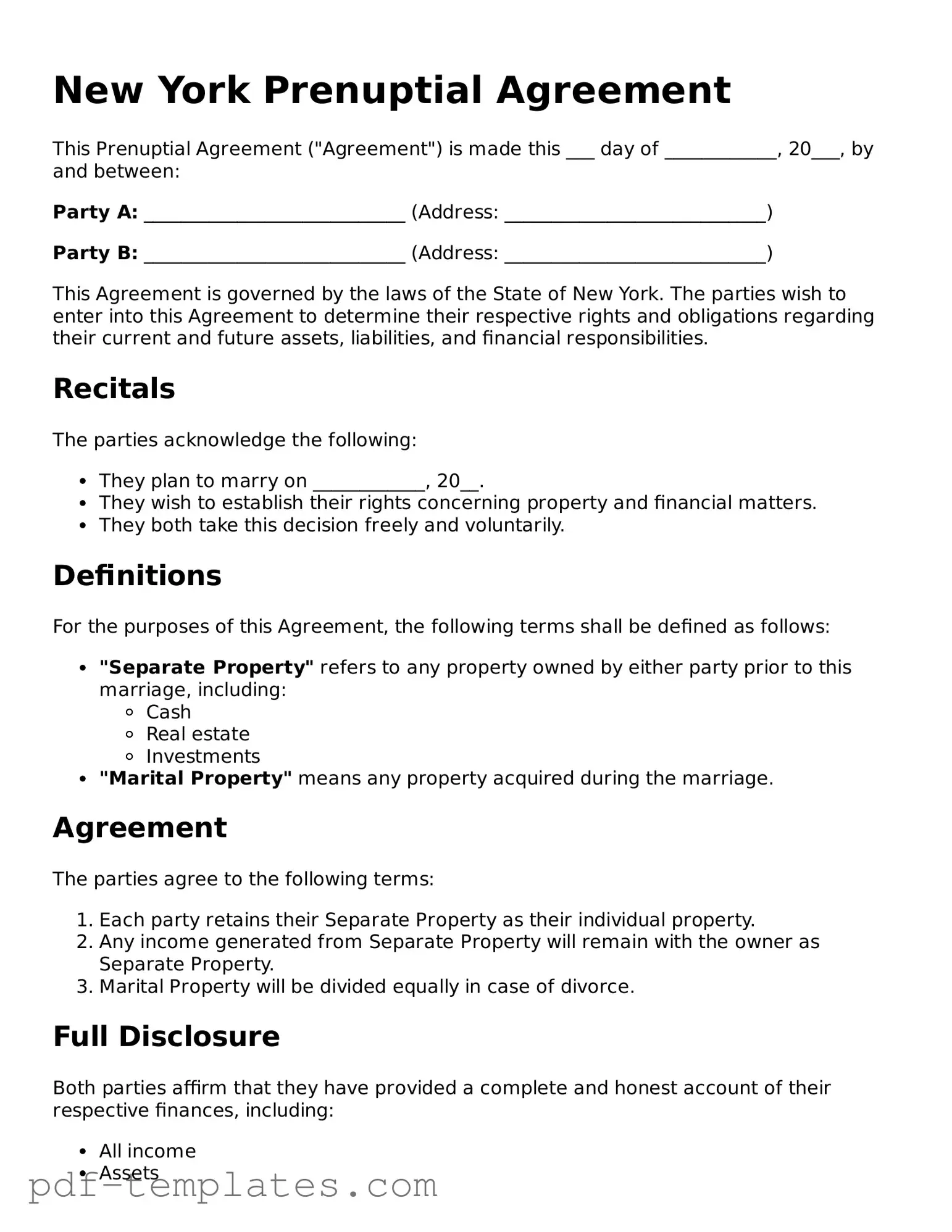A cohabitation agreement shares similarities with a prenuptial agreement, as both documents outline the rights and responsibilities of partners. While a prenuptial agreement is established before marriage, a cohabitation agreement is created for couples who choose to live together without marrying. Both documents address issues such as property division, financial obligations, and dispute resolution, helping to clarify expectations and protect individual interests in the relationship.
A postnuptial agreement is another document akin to a prenuptial agreement. This agreement is executed after a couple has married and serves a similar purpose: to define the division of assets and responsibilities in the event of a divorce or separation. Like prenuptial agreements, postnuptial agreements can address issues such as spousal support and property rights, providing couples with clarity and security regarding their financial arrangements.
A separation agreement is also comparable to a prenuptial agreement. This document is typically drafted when a couple decides to separate but not divorce. It outlines the terms of the separation, including asset division, child custody, and support obligations. Both agreements aim to protect the interests of each party and can help prevent disputes during the separation process.
An estate plan, particularly a will or trust, shares some characteristics with a prenuptial agreement. Both documents address the distribution of assets and can help prevent conflicts among heirs. While a prenuptial agreement focuses on the division of property during a marriage or divorce, an estate plan ensures that an individual's wishes are honored after death, providing a framework for asset management and inheritance.
The CA DMV SR1 form is essential for documenting traffic accidents in California, ensuring compliance with the state's Department of Motor Vehicles (DMV) regulations. This form must be filled out accurately to report incidents involving personal injury, death, or significant property damage, with a threshold of $1,000. Timely submission is critical to maintain driving privileges and avoid potential penalties. For further assistance and resources, you can refer to All California Forms, which provide comprehensive information on necessary documentation.
Finally, a financial disclosure statement is akin to a prenuptial agreement in that it requires both parties to disclose their financial information. This transparency is essential in both documents to ensure that all parties are fully informed about assets and liabilities, which can significantly impact the terms of a prenuptial agreement. By ensuring full disclosure, both parties can make informed decisions and foster trust in the relationship.
